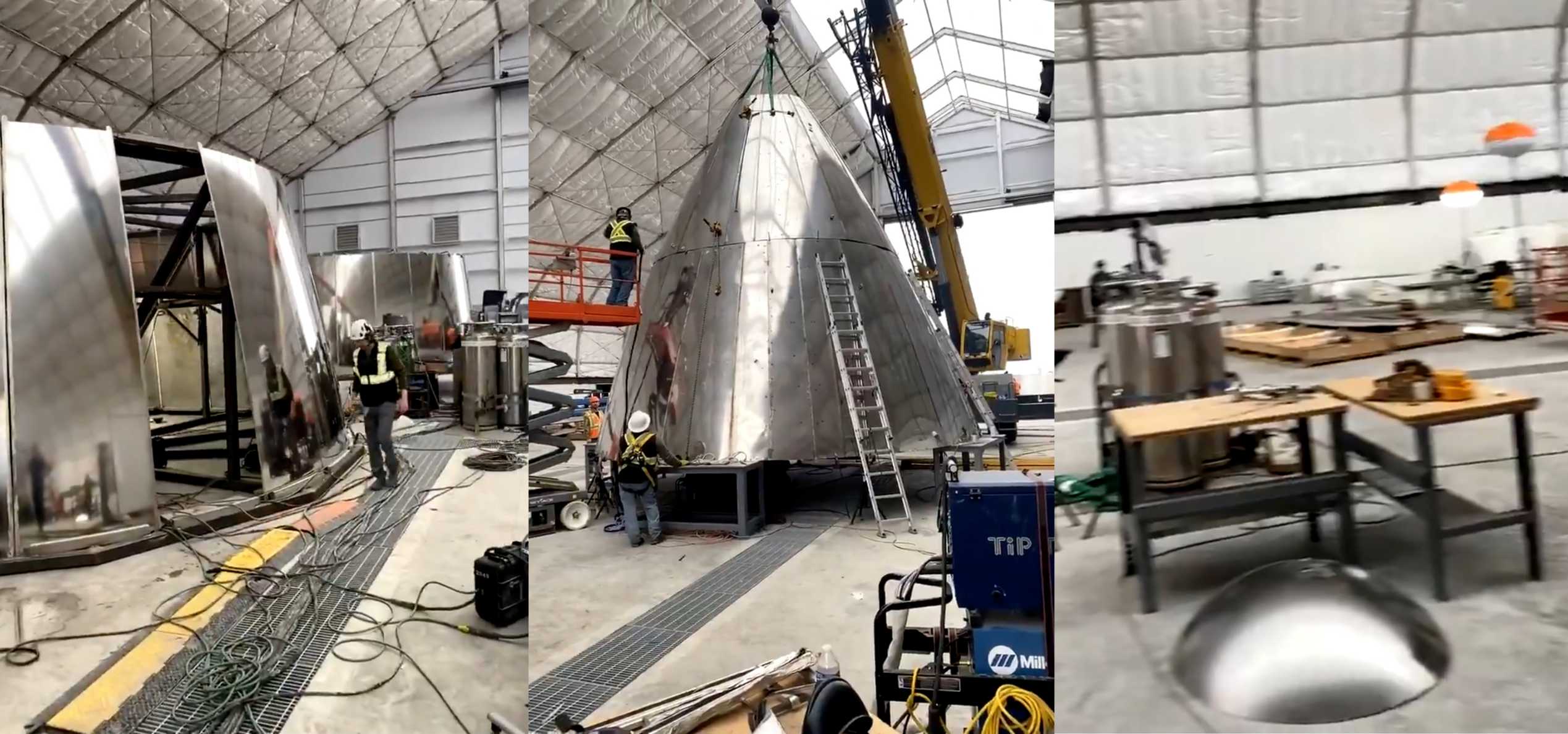
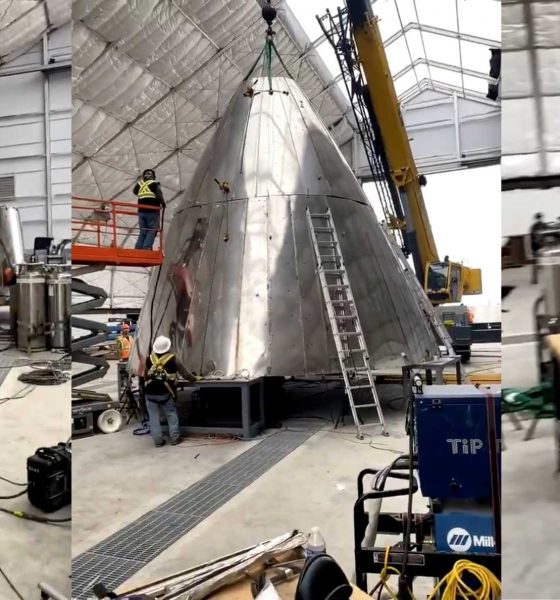
News
SpaceX’s first Starship test flight imminent as rocket nosecone nears completion
Elon Musk has posted a new glimpse inside SpaceX’s South Texas Starship factory, revealing a nearly-completed rocket nosecone and indicating that the first upgraded Starship prototype’s flight debut is imminent.
SpaceX teams have been working around the clock for a little over a month to build the first full-scale, flightworthy Starship prototype, a process that only began after two ‘test tanks’ were fabricated, assembled, and pressurized until they burst on January 10th and 28th. Built with improved tools and methods, those test results – particularly from the second test tank – allowed SpaceX to empirically confirm that its current infrastructure and techniques are ready to manufacture orbital-class (and even human-rated) Starships right now.
And so work on the first truly flightworthy Starship prototype – known as SN01 (serial number 01) – thus began in earnest around mid-January, perhaps less than a month ago. Over the course of that month, SpaceX’s South Texas team has made spectacular progress. Starship SN01’s business half – comprised of a Raptor engine section, a liquid oxygen tank, a methane tank, and all associated tank domes and plumbing – is likely just a single big stacking and welding event away from being structurally complete. The upper section of the prototype – Starship’s curved nose and a few less-critical steel rings – has, however, been a bit more elusive.
Aside from a few partial glimpses earlier this month, that nose appeared for the first time two or so weeks on a local resident’s livestream earlier today – just a few hours before Musk offered an even better view inside the same tent it was spotted in. Situated in the second large sprung structure erected at SpaceX’s Boca Chica, Texas facilities, Musk’s video revealed that that tent – really only completed less than two weeks ago – is already full of Starship production hardware.

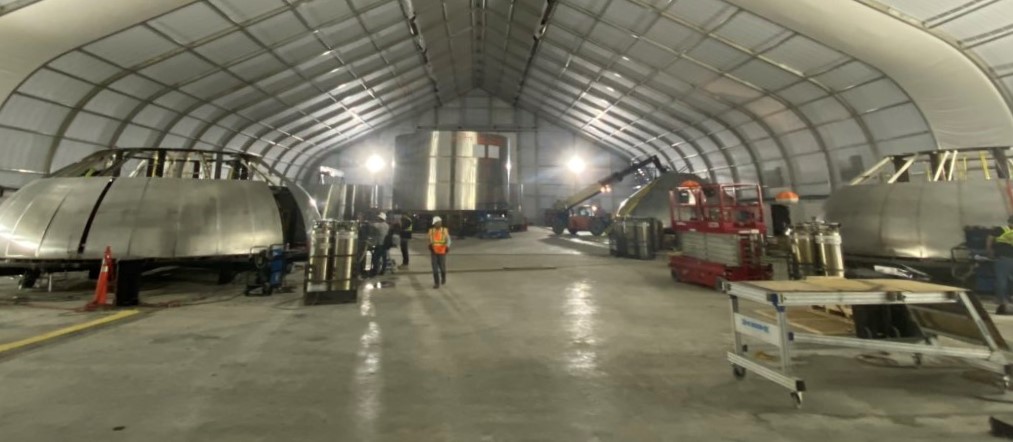
Without exaggerating, it’s safe to say that SpaceX has effectively gone from a handful of parts worth of Texas rocket production to a multi-vehicle, Starship production line concurrently manufacturing multiple vehicles in about eight weeks. While it would be theoretically easy for critics and a more general audience to see little more than some cheap stainless steel parts in a few hastily-constructed temporary tents, the reality is that SpaceX has already proven – at a minimum – that a steel Starship built with the exact same tools, facilities, and methods will likely be capable of spaceflight.
SpaceX’s January 2020 Starship test tank program proved as much, demonstrating that thin steel tanks built in tents can serve as orbital-class pressure vessels and survive at internal pressures greater as high as 8.5 bar (125 psi) while filled with cryogenic (extremely cold) liquid. Meanwhile, Tesla’s Fremont factory General Assembly line 4 (GA4) – having continuously churned out high-quality Model 3s for more than a year – has proven that sprung structures can make for fast, cheap, and more or less permanent factory solutions. Prospective SpaceX competitor Blue Origin even based its own brand new headquarters – opened in January 2020 – around an odd U-shaped sprung structure.
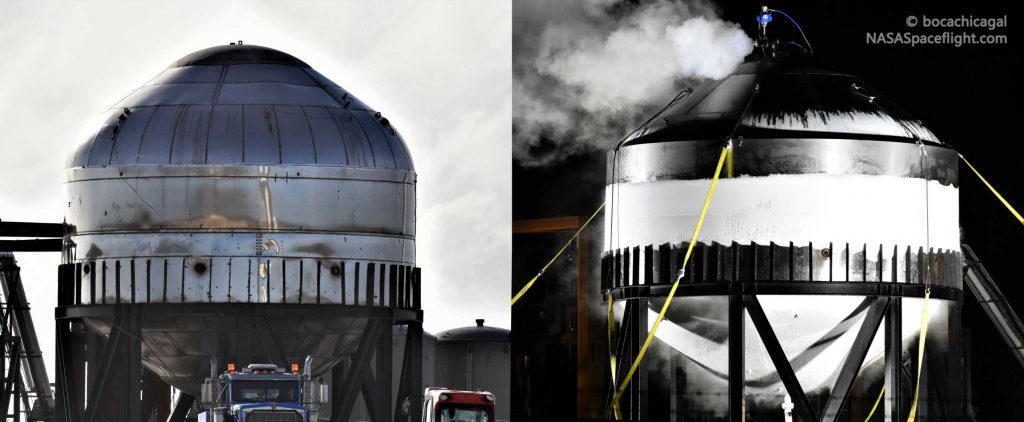
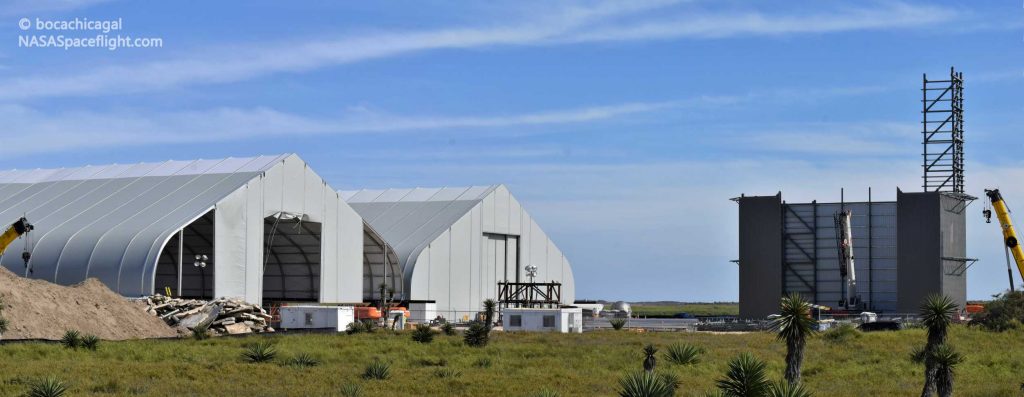
Nevertheless, SpaceX’s small test tank successes do not necessarily guarantee that the same kind of tests performed at full scale will be equally successful. The biggest proof of concept for SpaceX’s upgraded Starship production methods will involve manufacturing, fueling, static-firing, and – eventually – flying a complete Starship prototype built with the same methods as those test tanks.
The pressure vessel section of Starship SN01 – said pathfinder prototype – appears to be nearly complete, missing only its integrated engine section and oxygen tank dome before it could theoretically be ready to start cryogenic testing. Incredibly, information acquired and published by NASASpaceflight.com reporter Michael Baylor indicates that SpaceX wants to complete the prototype and transport Starship to its nearby launch site just ten days from now.
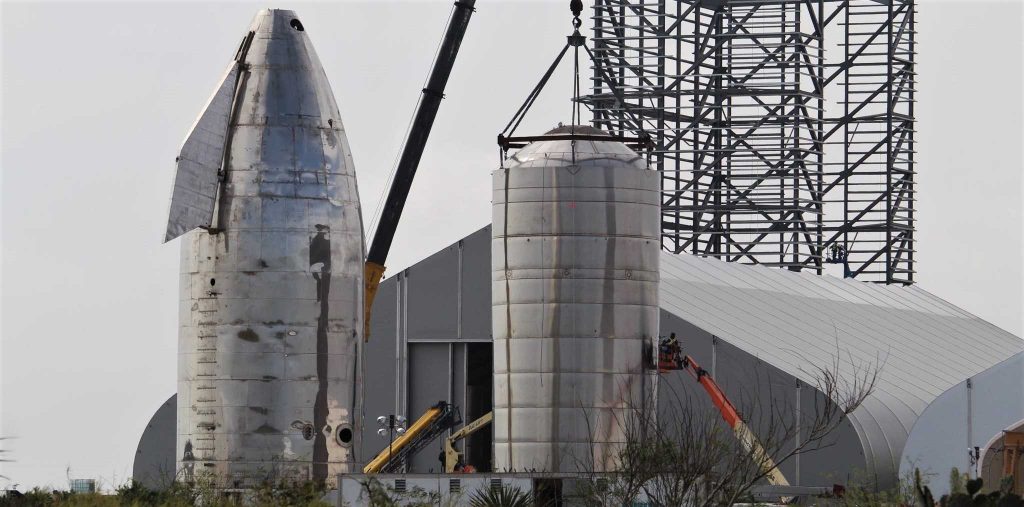
A step further, if things go as planned, SpaceX wants to install Starship SN01’s three Raptor engines and perform a live static fire test as soon as early March. In short, SpaceX’s Starship program is likely about to enter a new period of ambitious, rapid-fire testing. Stay tuned!
Check out Teslarati’s Marketplace! We offer Tesla accessories, including for the Tesla Cybertruck and Tesla Model 3.

News
Tesla (TSLA) receives “Buy” rating and $551 PT from Canaccord Genuity
He also maintained a “Buy” rating for TSLA stock over the company’s improving long-term outlook, which is driven by autonomy and robotics.

Canaccord Genuity analyst George Gianarikas raised his Tesla (NASDAQ:TSLA) price target from $482 to $551. He also maintained a “Buy” rating for TSLA stock over the company’s improving long-term outlook, which is driven by autonomy and robotics.
The analyst’s updated note
Gianarikas lowered his 4Q25 delivery estimates but pointed to several positive factors in the Tesla story. He noted that EV adoption in emerging markets is gaining pace, and progress in FSD and the Robotaxi rollout in 2026 represent major upside drivers. Further progress in the Optimus program next year could also add more momentum for the electric vehicle maker.
“Overall, yes, 4Q25 delivery expectations are being revised lower. However, the reset in the US EV market is laying the groundwork for a more durable and attractive long-term demand environment.
“At the same time, EV penetration in emerging markets is accelerating, reinforcing Tesla’s potential multi‑year growth runway beyond the US. Global progress in FSD and the anticipated rollout of a larger robotaxi fleet in 2026 are increasingly important components of the Tesla equity story and could provide sentiment tailwinds,” the analyst wrote.
Tesla’s busy 2026
The upcoming year would be a busy one for Tesla, considering the company’s plans and targets. The autonomous two-seat Cybercab has been confirmed to start production sometime in Q2 2026, as per Elon Musk during the 2025 Annual Shareholder Meeting.
Apart from this, Tesla is also expected to unveil the next-generation Roadster on April 1, 2026. Tesla is also expected to start high-volume production of the Tesla Semi in Nevada next year.
Apart from vehicle launches, Tesla has expressed its intentions to significantly ramp the rollout of FSD to several regions worldwide, such as Europe. Plans are also underway to launch more Robotaxi networks in several more key areas across the United States.
News
Waymo sues Santa Monica over order to halt overnight charging sessions
In its complaint, Waymo argued that its self-driving cars’ operations do not constitute a public nuisance, and compliance with the city’s order would cause the company irreparable harm.

Waymo has filed a lawsuit against the City of Santa Monica in Los Angeles County Superior Court, seeking to block an order that requires the company to cease overnight charging at two facilities.
In its complaint, Waymo argued that its self-driving cars’ operations do not constitute a public nuisance, and compliance with the city’s order would cause the company irreparable harm.
Nuisance claims
As noted in a report from the Los Angeles Times, Waymo’s two charging sites at Euclid Street and Broadway have operated for about a year, supporting the company’s growing fleet with round-the-clock activity. Unfortunately, this has also resulted in residents in the area reportedly being unable to sleep due to incessant beeping from self-driving taxis that are moving in and out of the charging stations around the clock.
Frustrated residents have protested against the Waymos by blocking the vehicles’ paths, placing cones, and “stacking” cars to create backups. This has also resulted in multiple calls to the police.
Last month, the city issued an order to Waymo and its charging partner, Voltera, to cease overnight operations at the charging locations, stating that the self-driving vehicles’ activities at night were a public nuisance. A December 15 meeting yielded no agreement on mitigations like software rerouting. Waymo proposed changes, but the city reportedly insisted that nothing would satisfy the irate residents.
“We are disappointed that the City has chosen an adversarial path over a collaborative one. The City’s position has been to insist that no actions taken or proposed by Waymo would satisfy the complaining neighbors and therefore must be deemed insufficient,” a Waymo spokesperson stated.
Waymo pushes back
In its legal complaint, Waymo stated that its “activities at the Broadway Facilities do not constitute a public nuisance.” The company also noted that it “faces imminent and irreparable harm to its operations, employees, and customers” from the city’s order. The suit also stated that the city was fully aware that the Voltera charging sites would be operating around the clock to support Waymo’s self-driving taxis.
The company highlighted over one million trips in Santa Monica since launch, with more than 50,000 rides starting or ending there in November alone. Waymo also criticized the city for adopting a contentious strategy against businesses.
“The City of Santa Monica’s recent actions are inconsistent with its stated goal of attracting investment. At a time when the City faces a serious fiscal crisis, officials are choosing to obstruct properly permitted investment rather than fostering a ‘ready for business’ environment,” Waymo stated.
News
Tesla FSD v14.2.2 is getting rave reviews from drivers
So far, early testers have reported buttery-smooth drives with confident performance, even at night or on twisty roads.

Tesla Full Self-Driving (Supervised) v14.2.2 is receiving positive reviews from owners, with several drivers praising the build’s lack of hesitation during lane changes and its smoother decision-making, among others.
The update, which started rolling out on Monday, also adds features like dynamic arrival pin adjustment. So far, early testers have reported buttery-smooth drives with confident performance, even at night or on twisty roads.
Owners highlight major improvements
Longtime Tesla owner and FSD user @BLKMDL3 shared a detailed 10-hour impression of FSD v14.2.2, noting that the system exhibited “zero lane change hesitation” and “extremely refined” lane choices. He praised Mad Max mode’s performance, stellar parking in locations including ticket dispensers, and impressive canyon runs even in dark conditions.
Fellow FSD user Dan Burkland reported an hour of FSD v14.2.2’s nighttime driving with “zero hesitations” and “buttery smooth” confidence reminiscent of Robotaxi rides in areas such as Austin, Texas. Veteran FSD user Whole Mars Catalog also demonstrated voice navigation via Grok, while Tesla owner Devin Olsen completed a nearly two-hour drive with FSD v14.2.2 in heavy traffic and rain with strong performance.
Closer to unsupervised
FSD has been receiving rave reviews, even from Tesla’s competitors. Xpeng CEO He Xiaopeng, for one, offered fresh praise for FSD v14.2 after visiting Silicon Valley. Following extended test drives of Tesla vehicles running the latest FSD software, He stated that the system has made major strides, reinforcing his view that Tesla’s approach to autonomy is indeed the proper path towards autonomy.
According to He, Tesla’s FSD has evolved from a smooth Level 2 advanced driver assistance system into what he described as a “near-Level 4” experience in terms of capabilities. While acknowledging that areas of improvement are still present, the Xpeng CEO stated that FSD’s current iteration significantly surpasses last year’s capabilities. He also reiterated his belief that Tesla’s strategy of using the same autonomous software and hardware architecture across private vehicles and robotaxis is the right long-term approach, as it would allow users to bypass intermediate autonomy stages and move closer to Level 4 functionality.








